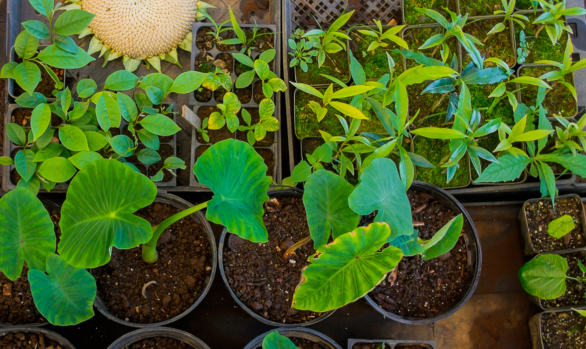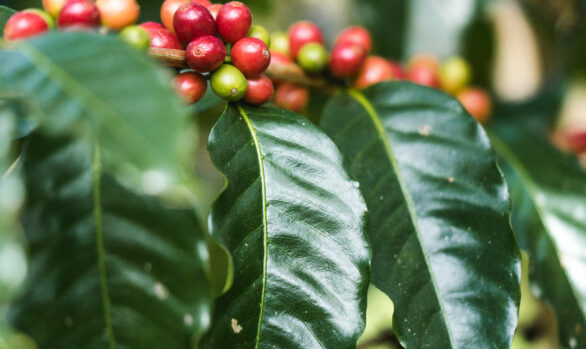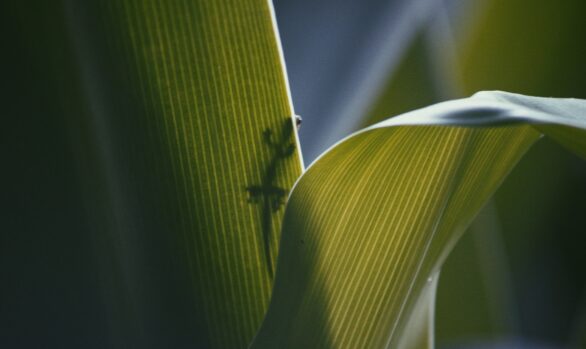Learn
Through our 80 hour, hands-on intensive course you will learn about the core fundamentals of permaculture, sustainability, and ecological design.
Explore
Explore case studies on our 64 acre farm that has been implementing permaculture and ecological design since 2014.
Practice
Under the mentorship of your instructors, you will design and present a permaculture inspired project that applies the skills you learned.
Next Session: 14th to 28th of January, 2023
The Permaculture Design Certification Course (PDC) is a 72-hour minimum course. The Hawaiian 2 week intensive Permaculture Course includes 8 extra hours to allow for practicums, workshops, tours and permaculture farm experiences (total 80h). The Permaculture Certificate is globally recognized throughout the world. The holder of a Permaculture Design certificate has achieved a working understanding of ecologically based site design, planning and management as well as an understanding of principles, strategies and techniques available to inspire directions toward community resiliency, economic stability and personal growth.
Throughout the entire course you will be engaged in learning and experiencing an empowering way of living in the world, surrounded and supported by like-minded people and instructors. Our goal is to make you a part of our farm community (Ohana). Activities may include making an “A frame,” laying out and digging a water harvesting contour swale, sheet mulching, pruning, seed planting, plant propagation, bed preparation, compost pile making, water harvesting techniques, natural building, herbalism, Hawaiian culture, clearing existing food forest, community garden service and more.
Course Information
Penny Livingston’s PDC curriculum is the culmination of more than 35 years of teaching permaculture design to students from all over the globe. To be successful at implementing permaculture design, most students need more than the basic curriculum. Our 80+ hour courses is crafted to include the following elements to help launch students on a successful journey:
-
- The classic permaculture curriculum, with founding principles and techniques developed by Bill Mollison and David Holmgren
- A diverse range of hands-on activities with experienced instructors (Kumu’s) during the program in various aspects of the living classroom of the farm
- Tools for cultivating our inner ecology to break through old patterns and barriers that hold us back from success
- Ethno cultural program to better connect with nature (Āina) according to time and circumstances
- A globally recognized Permaculture Design Certificate upon completion of the course.
While no two courses participate in exactly the same activities, each course includes classroom and/or hands-on activities in the following areas:
- Permaculture principles and ethics
- Reading the landscape
- Pattern and pattern application
- Water harvesting
- Swale building
- Zone and sector analysis
- Climate and micro climate strategies
- Mapping
- Urban permaculture
- Land access
- Community building
- Plant guilds
- Soil Carbon Sequestration and Biochar
- Food forests and agroforestry
- The design process, principles, strategies, and techniques
- Bird language and nature awareness
- Soil building and sheet mulching
- Earthworks and natural building
- Grey water systems
- Bioremediation
- Renewable energy systems
- Forest management
- Watershed management
- Economy and Equity
- Group work on a conceptual design project
Sustainability has a prominent place in public discourse as a complex synergy of social justice, ecological integrity, and economic vitality, applied across present and future generations. Beyond Sustainability is a shift to an ecocentric, regenerative paradigm.
Permaculture is a set of values and principles conducive to the harmonious integration of people, plants, and animals within an ecosystem. It is the conscious design of cultivated ecosystems that have the diversity, stability, and resilience of natural systems. “Permaculture is a design discipline based on the foundational ecological principles of nature.” It’s a process of taking one’s observations of natural systems and applying the lessons learned to the human-based environment. Permaculture is something we “use” to discover what to “do”. It is a road map to finding our small place in the world as an integral part of the whole planetary system. Permaculture is a harmonious integration of the natural landscape design with human culture, providing food, energy, shelter, and other material and non-material needs in a sustainable, resilient, diverse and stable way. Permaculture works with, rather than against nature.
Biodiversity is the term given to the variety of life on Earth. It is the variety within and between all species of plants, animals, and microorganisms and the ecosystems within which they live and interact. It also refers to the multitude of different ecosystems in which species form unique communities, interacting with one another and the air, water, and soil. All species depend on other species for survival. Ecosystems vary in size. A large stand of forest or a small pond can each be described as an ecosystem. Ecosystem diversity refers to the variety of ecosystems in a given place. Within any broader landscape, there is a mosaic of interconnected ecosystems. To conserve biodiversity, conservation at the landscape level is critical. This enables the protection of a representative array of interacting ecosystems and their associated species and genetic diversity.
Environmental Sociology advocates for a shift to an ecological paradigm that recognizes human-ecosystem interdependence and biological limits to societal phenomena. Many people around the world see great danger in our current social paradigm’s desire for constant unconstrained growth. It is clear there is not an endless bounty of resources and that growth should not be the driving force. Through “development” and globalization, people around the world are using more resources than the earth can renew, and therefore it is becoming clear that if we continue at current rates we will expend all our natural resources in trying to sustain our overpopulated world. Many environmentalists and activists see the current crisis we face in overpopulation and environmental destruction of land and want large-scale changes in countries’ policies and institutions. Consumers are identifying that they must take responsibility for their consumer choices and buy only what they truly need, recognizing that the process of manufacturing, products brought into the store and then quickly thrown away must change. In short, we need to shift to a new paradigm where we give back more than we take. Permaculture offers a scalable system of personal empowerment for individuals, organizations, communities, cities, provinces, countries, etc. to shift to an ecological, regenerative paradigm.
Check out our general FAQ!




